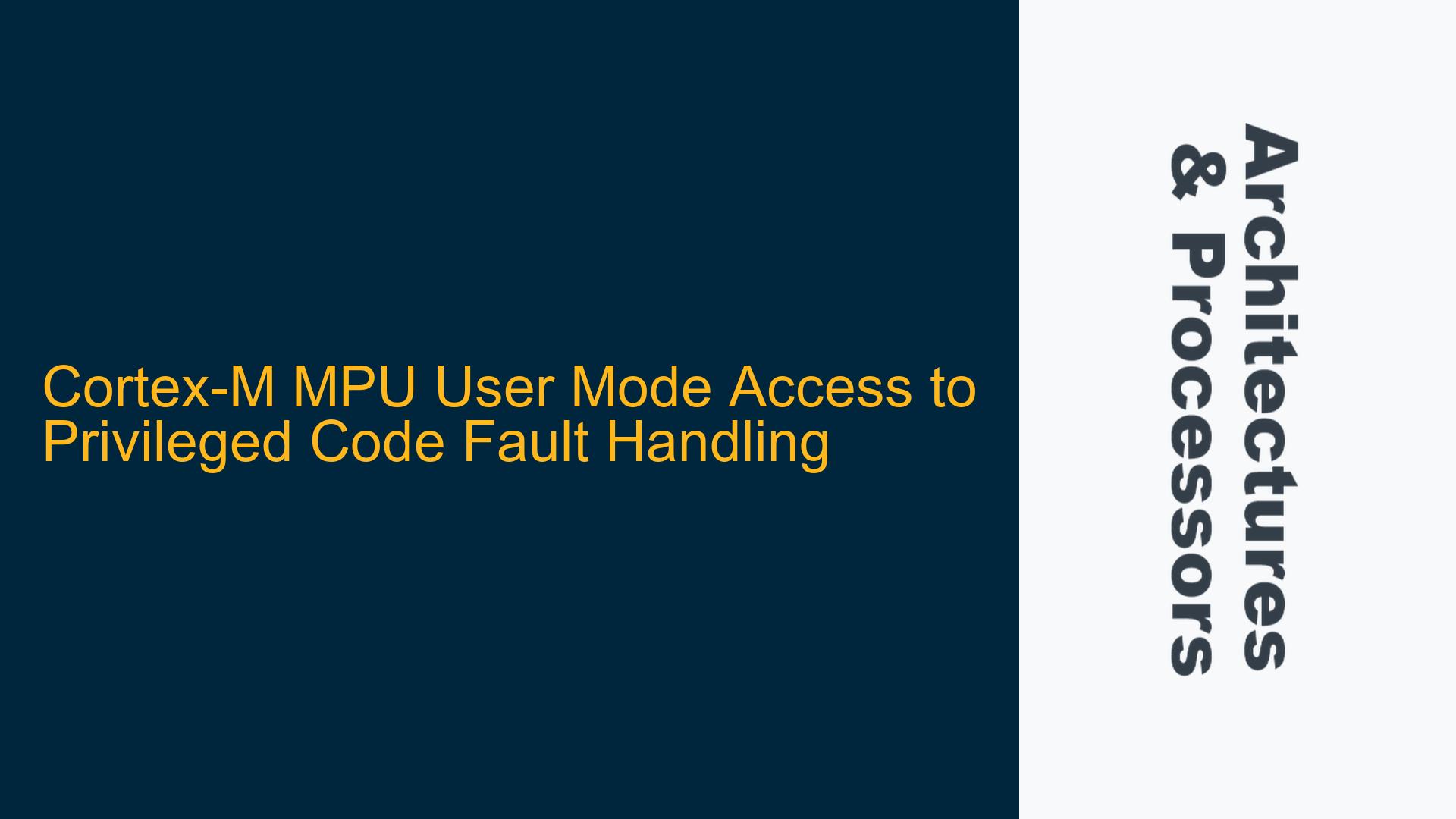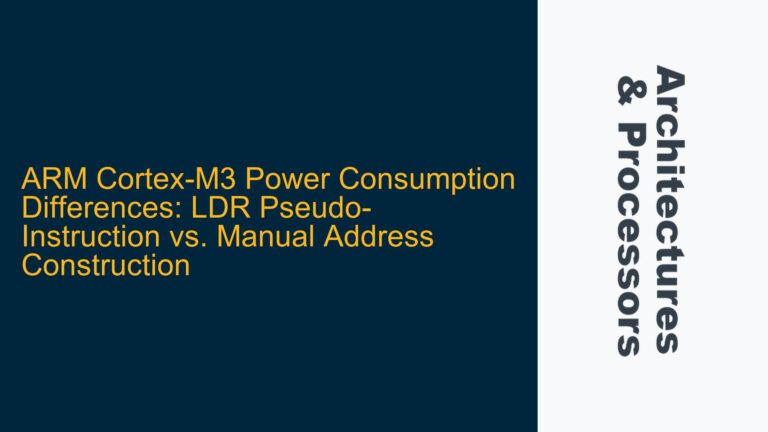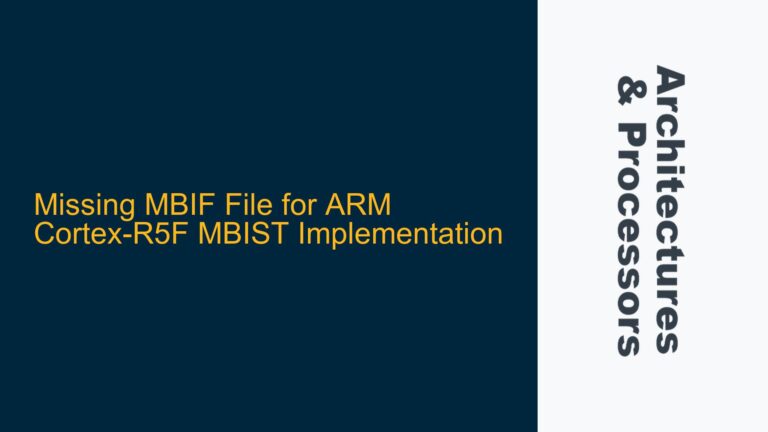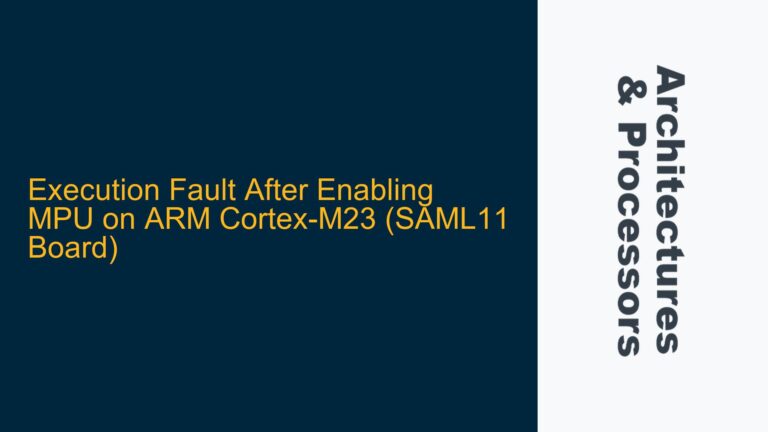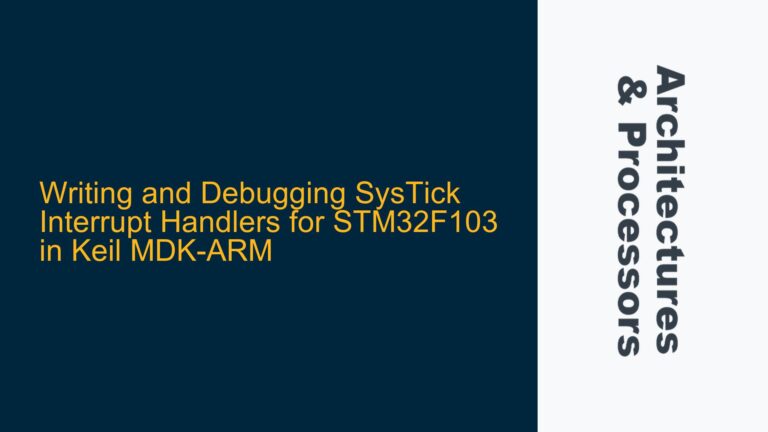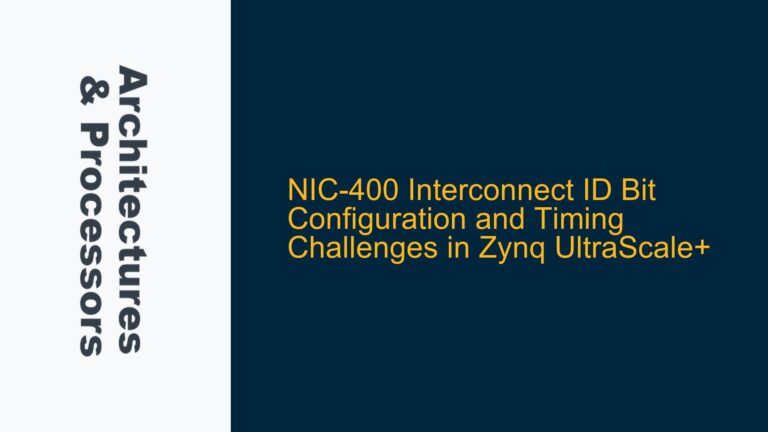Cortex-M MPU Privileged Code Access Violation Behavior
When working with the Cortex-M Memory Protection Unit (MPU), one of the critical scenarios to understand is how the processor handles user-mode attempts to access privileged code regions. In this case, the privileged code is stored in a memory region configured as privileged-read-only, user-denied, and executable. When a Branch with Link (BL) or Branch with Link and Exchange (BLX) instruction is executed from user mode targeting such a privileged region, the Cortex-M processor will generate a memory management fault. This fault occurs because the MPU enforces access permissions, and user-mode code is explicitly denied access to the privileged region.
The fault behavior is governed by the Cortex-M exception handling mechanism. Specifically, the processor will push a stack frame onto the current stack (either the main stack or the process stack, depending on the current mode). This stack frame includes the Program Counter (PC) value at the time of the fault. The PC value stored in the stack frame will point to the faulting instruction, which is the BL or BLX instruction that attempted to branch to the privileged code region. This is crucial for fault handlers, as it allows the handler to identify the exact instruction that caused the fault and take appropriate action.
The Memory Management Fault Status Register (MMFSR) and the Memory Management Fault Address Register (MMFAR) provide additional context about the fault. The MMFSR contains bits that indicate the type of access violation, such as an instruction fetch violation or a data access violation. In this case, the fault would be flagged as an instruction fetch violation since the user-mode code attempted to execute a privileged instruction. The MMFAR, however, will not be updated in this scenario because the fault is not related to a data access violation.
Understanding this behavior is essential for implementing a robust fault handler that can intercept user-mode attempts to access privileged code, validate the target address, and transition to privileged mode to execute the requested function. The fault handler must carefully manipulate the stack frame to ensure a smooth transition between user and privileged modes and a safe return to the caller.
Memory Management Fault Handling and Privilege Escalation
The core issue revolves around the interaction between the Cortex-M MPU, the exception handling mechanism, and the need for controlled privilege escalation. When user-mode code attempts to execute a privileged function, the MPU triggers a memory management fault. The fault handler must then determine whether the target address of the faulting instruction is within a predefined region of privileged functions. If the target address is valid, the handler must modify the stack frame to escalate privileges, execute the function, and then return to user mode.
The fault handler’s primary tasks include:
- Extracting the faulting instruction’s address from the stack frame.
- Decoding the BL or BLX instruction to determine the target address.
- Validating the target address against a list of allowed privileged functions.
- Modifying the stack frame to switch to privileged mode.
- Using a trampoline function to execute the privileged code.
- Restoring the original user-mode context and returning to the caller.
The trampoline function acts as an intermediary between user mode and privileged mode. It ensures that the privileged function is executed with the correct permissions and that the processor state is restored to user mode after the function completes. This approach requires careful manipulation of the stack frame and the processor’s control registers to avoid unintended side effects.
Implementing a Secure Privilege Escalation Mechanism
To implement a secure privilege escalation mechanism, the fault handler must follow a precise sequence of steps. First, the handler must save the current processor state, including the contents of the general-purpose registers and the program status registers. Next, it must decode the faulting instruction to determine the target address. This involves examining the opcode of the BL or BLX instruction and calculating the destination address based on the instruction’s offset field.
Once the target address is determined, the handler must validate it against a predefined list of allowed privileged functions. This list should be stored in a secure memory region that is inaccessible to user-mode code. If the target address is valid, the handler must modify the stack frame to switch to privileged mode. This involves setting the appropriate bits in the CONTROL register and updating the exception return value in the stack frame.
The trampoline function is then invoked to execute the privileged code. The trampoline function must ensure that all necessary context switches are performed and that the privileged function is executed with the correct permissions. After the privileged function completes, the trampoline function must restore the original user-mode context and return control to the caller.
Throughout this process, the fault handler must ensure that all operations are atomic and that no intermediate state is exposed to user-mode code. This requires careful use of memory barriers and synchronization primitives to prevent race conditions and ensure the integrity of the privilege escalation mechanism.
By following these steps, developers can implement a robust and secure mechanism for handling user-mode access to privileged code on Cortex-M processors. This approach leverages the Cortex-M MPU and exception handling capabilities to enforce access controls while providing a controlled pathway for privilege escalation when necessary.
